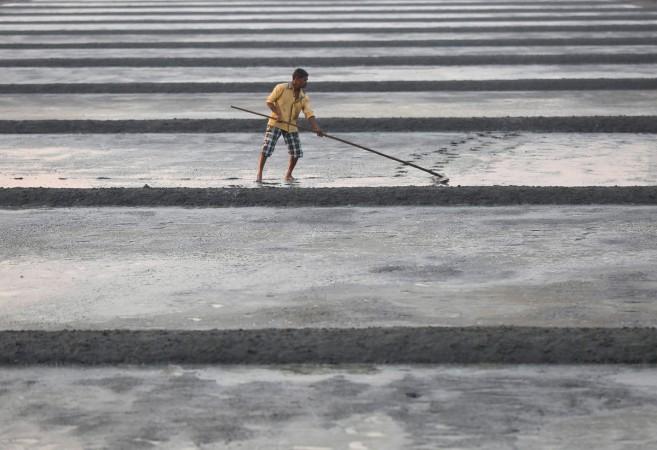
In what is likely to sound like music to China's ears, a projection by brokerage firm Nomura says the disruption caused by Prime Minister Narendra Modi's demonetisation decision on November 8 could push India's gross domestic product (GDP) growth to a 20-year low.
The forecast comes amid most analysts, brokerages and ratings agencies predicting a severe impact on the world's fastest-growing economy as a result of the cash crunch, since commercial transactions are still dominated by cash, notwithstanding the digital push.
Nomura said its Composite Leading Index (CLI) indicates bad times for India.
"Nomura's CLI for India for early 2017 has slumped to the lowest level since the series started in 1996 and is consistent with GDP growth of below 6%. This suggests that there is downside risk to our Q1 GDP growth projection of 6.9% y-o-y; i.e., near-term growth may fall much more than expected," it said in a note on Thursday.
The brokerage added that macroeconomic data for November did not capture the impact of the note ban and December figures are likely to reflect "the full growth impact".
Nomura's statement joins the list of many such predictions, the first made by India Ratings as early as on November 10, 2016.
Here are the other highlights of the Nomura report:
First, the full impact of demonetisation will be felt in December data, not November's. This is because the impact of demonetisation was felt only in the last three weeks of November (post-8 November). Also, there are positive base effects from the Diwali holidays, which fell in October in 2016 and November in 2015.
As a result, certain indicators such as diesel consumption, railway traffic and power generation held up well in November, although the strength in diesel consumption was due to acceptance of old high-denomination notes at fuel pumps.
This suggests that industrial production growth will also rebound in November (from -1.9% y-o-y in October), but will likely slow sharply in December as the positives fade and because firms are likely to be saddled with higher inventory (at end-November) due to weaker sales, resulting in production shutdowns in December.
Second, sales have moderated across the board, but the rural economy has been hurt much more than the urban economy due to the higher cash intensity of transactions in rural areas. This explains the sharper slowdown in two-wheeler sales compared to passenger vehicle sales.
Third, the sharp contraction in the services PMI relative to the manufacturing PMI also validates the view that services, which are more unorganised in nature, were hit more than manufacturing by the demonetisation.
We find that service sectors such as trade, real estate, hotels and restaurants, construction and transport have a higher share of the unorganised sector.
The slowdown in both light commercial vehicles and medium and heavy commercial vehicle sales in November is a sign of the slowdown in transportation activity.
Fourth, demonetisation has hit export volumes a lot more than imports. The cash crunch induced by demonetisation has hurt cash-intensive export sectors such as gems and jewellery and textiles. Import volumes have been relatively stable, but a slowdown is likely in the coming months as gold imports and domestic demand weaken further.
Finally, as expected, demonetisation pushed bank deposit growth to a 53-month high of 15.9% y-o-y at end-November, but has led to concomitant slump in credit growth to a multi-decade low of 6.6% due to higher repayments (using old notes) and slower fresh disbursements as banks have been busy with cash exchanges.
Data thus far suggest that demonetisation has hit rural consumption demand harder than urban demand, services more than manufacturing, and exports more than imports.
How soon the economy rebounds will depend on how quickly policymakers re-monetise the economy. Our expectation is that the cash crunch will ease out by February and that growth should start to recover from Q2 2017 onwards.
The Nomura RBI Policy Signal Index moved closer to the neutral zone (on hold) in December, suggesting that global factors (narrowing interest rate differentials and higher oil prices) are constraining the Reserve Bank of India (RBI). We expect a continued domestic slowdown to tilt the RBI's decision in favour of a 25bp repo rate cut in February.














